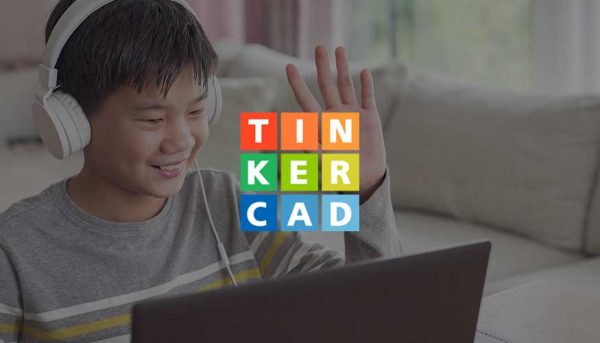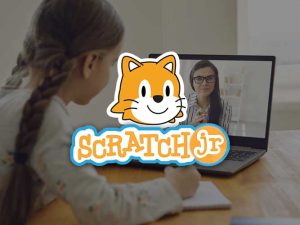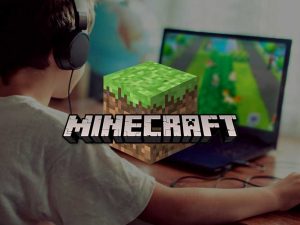The full 3D Modeling Course prepares kids with +10 years of age to learn the basics of design and architecture. This course covers all the modules of the Thinkercad platform; such as creating simple and complex 3D objects, breaking down models and modifying their details, working with camera and measurement tools, creating a realistic environment, and many other techniques and tools.
By taking this course, children learn how to model animals, characters, and different objects in Thinkercad which is a great starting point for them to step into the fantastic world of design and architecture. This course is a prefect introduction for kids to learn 3Ds Max and AutoCAD in future!
Curriculum
Beginner 3D Modeling Lessons (1 – 11)
3D Modeling Lesson 1:
Introduction |
• Understand how to create new designs with the dashboard
• Understand how to copy existing designs from the gallery into a project
• Know how to control and operate the camera
• Know how to select and scale objects
• Know how to copy and paste objects |
3D Modeling Lesson 2:
Manipulate and scale shapes |
• Understand how to resize and scale shapes along different axes
• Understand how 3d models should be built structurally
• Understand about the workflow in 3d modelling
• Understand how to color objects in Tinkercad |
3D Modeling Lesson 3:
Assembling Basic objects |
• Able to create simple objects that can be found in the household
• Know how to use the text tool in Tinkercad to have printed text on objects
• Know how to make design accurate through image references |
3D Modeling Lesson 4:
Create complex shapes with the hole tool |
• Know how to work with a wider range of shapes to build a model
• Able to utilize the hole tool to hollow out shapes
• Able to create realistic designs with no shapes overlapping one another |
3D Modeling Lesson 5:
Building a large object |
• Understand the use of duplication and grouping tools to build a large object
• Able to identify which parts of a design can be duplicated for efficiency
• Able to create a design with a realistic scale and proportions |
3D Modeling Lesson 6:
Working with accurate measurements |
• Able to identify how design of an object can help solve problems
• Able to develop visual literacy and a vocabulary to express ideas
• Know how to calculate dimensions of different shapes to achieve specific volumes |
3D Modeling Lesson 7:
Circular patterns and formations |
• Able to create both linear and circular patterns
• Able to measure angles to accurately place objects
• Able to align shapes to create more accurate designs |
3D Modeling Lesson 8:
Curved objects with the scribble tool |
• Able to draw free hand objects to form abstract shapes
• Able to create a fire pattern using abstract shapes
• Understand how color affects the atmospheric perspective in the design |
3D Modeling Lesson 9:
Fast assembly of multiple objects |
• Know the techniques to faster assemble different shapes
• Able to identify the different components required to create a specific shape
• Able to work with multiple grouped objects during assembly |
3D Modeling Lesson 10:
Breaking down a model |
• Able to identify the different components of a design
• Able to identify which components should be grouped together
• Able to assemble components into a final model using the align tool |
3D Modeling Lesson 11:
Combining complex shapes with detail |
• Know how to add intricate details to an existing model
• Know color according to a set color palate
• Understand which colors are complementary to one another |
Intermediate 3D Modeling Lessons (12 – 19)
3D Modeling Lesson 12:
Code-blocks Programming |
• Able to create patterns using variables/objects and math blocks
• Able to create patterns by using the “repeat” block and “Count with” block
• Able to create at least one linear, gridded, or circular pattern
• Able to identify patterns found in nature and re-create them as a 3D model |
3D Modeling Lesson 13:
Advanced shapes and efficient assembly |
• Able to form advanced shapes using combinations of shapes and the hole tool
• Understand how to form more complex shapes such as thin flaps
• Understand time-efficient methods of combining shapes |
3D Modeling Lesson 14:
Advanced curved objects |
• Able to work with many simple shapes to form a detailed object
• Able to group shapes and use the hole tool to create composite objects
• Able to use perpendicular camera views to more effectively use the hole tool |
3D Modeling Lesson 15:
Combining objects and building up a model robot |
• Able to build an intricate object out of many shapes
• Able to identify poses for the robot that look natural
• Understand about the functionality of the robot and how it’s appearance is related |
3D Modeling Lesson 16:
Forming detailed objects with multiple shapes |
• Able to identify what elements of a design are most important to show personality
• Able to utilize smaller shapes within a design for finer detail
• Able to attempt to recreate realistic detail using image references |
3D Modeling Lesson 17:
Assembling curved objects from simple geometric shapes |
• Able to create an accurate representation of a musical instrument
• Able to add a personalized color palette and engraving to the instrument
• Able to create very small objects to add fine detail to a design |
3D Modeling Lesson 18:
Assembling multiple models within a project |
• Able to assemble a complete chess set and chessboard using complex shapes
• Able to create multiple individual objects within a single design
• Able to identify how angular designs differ from curved designs |
3D Modeling Lesson 19:
Importing and exporting objects |
• Able to import objects from the tinkercad gallery to form a cohesive design
• Able to create a city with some imported objects from the gallery and other objects from previous projects
• Understand how objects made by different people look differently |
Advanced 3D Modeling Lessons (20 – 25)
3D Modeling Lesson 20:
Creating a realistic environment |
• Able to create a realistic environment model from scratch
• Able to do research on objects that should be included in the environment to make it realistic
• Know how to choose an appropriate scale to create an environment on a Tinkercad work plane |
3D Modeling Lesson 21:
Quick, detailed assembly methods |
• Understand new methods for extruding shapes and quick assembly methods
• Able to build a more realistic sports car with sharper detail and accurate proportions
• Understand how to flip sets of objects to speed up assembly |
3D Modeling Lesson 22:
Modeling an animal |
• Able to create a 3D model of a living creature
• Know how to use the extrude tool to form curved objects that can’t be constructed from the basic objects in Tinkercad
• Know how to use image references while modelling to more accurately highlight specific features of the animal |
3D Modeling Lesson 23:
Modeling a character |
• Able to develop ideas on the personality and backstory of a character (their job, how they act, etc.)
• Able to create a 3D representation of a character within Tinkercad
• Able to introduce the 3D avatar to a friend or family member |
3D Modeling Lesson 24:
Creating an environment for a character |
• Able to assess what kind of environment a character would live in and place them into that environment
• Able to attempt to further portray the personality of the character and their role through environmental objects and where the character is placed within the scene |
3D Modeling Lesson 25:
Developing an environment for a character |
• Able to develop individual designs and export them into the characters’ environment
• Able to create other less detailed characters for them to interact with
• Able to identify if any aspect of the design feels ‘out of place’ and aim to remove any design elements that don’t fit |





